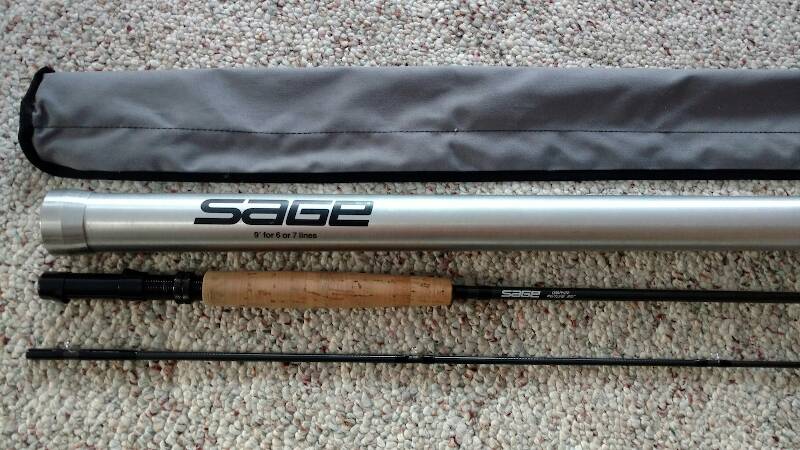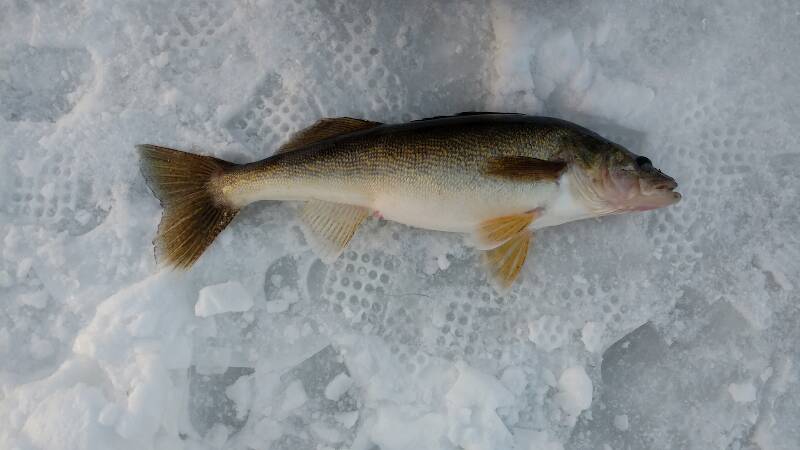
Salmonflies
Pteronarcys californica
The giant Salmonflies of the Western mountains are legendary for their proclivity to elicit consistent dry-fly action and ferocious strikes.
Featured on the forum

This one seems to lead to Couplet 35 of the Key to Genera of Perlodidae Nymphs and the genus Isoperla, but I'm skeptical that's correct based on the general look. I need to get it under the microscope to review several choices in the key, and it'll probably end up a different Perlodidae.

Troutnut is a project started in 2003 by salmonid ecologist Jason "Troutnut" Neuswanger to help anglers and
fly tyers unabashedly embrace the entomological side of the sport. Learn more about Troutnut or
support the project for an enhanced experience here.

Jebatty on Jan 26, 2017January 26th, 2017, 8:17 am EST
New to the forum, and purpose is to ID a Sage rod gifted to our community 2nd hand store which sells items to support our food shelf, and based on the ID to price it for sale. The only ID on the rod is Sage Graphite #6-7 Line, 9'0". It is a two piece rod and is in a shiny aluminum case with the SAGE logo. It also is in a cloth 2 compartment case, one for each of the two pieces of the rod. The rod may be new and unused.
Wbranch on Jan 26, 2017January 26th, 2017, 9:36 am EST
After viewing the picture I would tend to think this is a very old Sage fly rod and most likely an entry level model. I believe it is an old Sage rod because I can easily see the spiral effect of the graphite cloth being wrapped around the steel mandrel when the blank was being prepared to cook in the oven or autoclave.
That is how all the older graphite fly rods looked. My first graphite rod, an Orvis, back in the mid 1980's had the same spiral wrapped appearance to the blank. For many years now the rod makers perform an operation where they sand the blank to remove the spiral appearance created as the sections of graphite cloth were wound on the mandrels.
The reason I believe it is an entry level rod is because the reel seat (where the reel is attached to the rod) appears to be black anodized aluminum. No one today would consider paying the high prices of fly rods unless the reel seat is either nickel silver with some exotic wood spacer or some highly machined reel seat like can be found on the Orvis Helios 2.
It does appear to be either brand new or almost new. That being said I would doubt it is worth more than $150.00 and probably considerably less considering entire combination outfits are sold with rod, reel, line and some flies for less than $200. Hope this helps and maybe some other Forum members can chime in with their opinions.
That is how all the older graphite fly rods looked. My first graphite rod, an Orvis, back in the mid 1980's had the same spiral wrapped appearance to the blank. For many years now the rod makers perform an operation where they sand the blank to remove the spiral appearance created as the sections of graphite cloth were wound on the mandrels.
The reason I believe it is an entry level rod is because the reel seat (where the reel is attached to the rod) appears to be black anodized aluminum. No one today would consider paying the high prices of fly rods unless the reel seat is either nickel silver with some exotic wood spacer or some highly machined reel seat like can be found on the Orvis Helios 2.
It does appear to be either brand new or almost new. That being said I would doubt it is worth more than $150.00 and probably considerably less considering entire combination outfits are sold with rod, reel, line and some flies for less than $200. Hope this helps and maybe some other Forum members can chime in with their opinions.
Catskill fly fisher for fifty-five years.
Jmd123 on Jan 26, 2017January 26th, 2017, 11:14 am EST
I guess that would explain the double weight numbers, as I said in the other thread I haven't seen that in a while, but it was pretty common when I got started back then (1985).
Jonathon
Jonathon
No matter how big the one you just caught is, there's always a bigger one out there somewhere...
Quick Reply
Related Discussions
Topic
Replies
Last Reply
1
Jun 24, 2013
by Sayfu
by Sayfu
2
Oct 14, 2013
by PR49er
by PR49er




